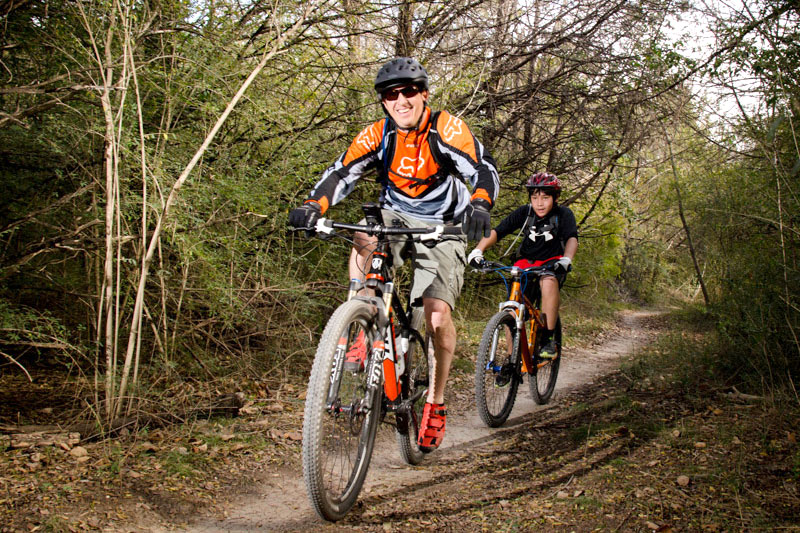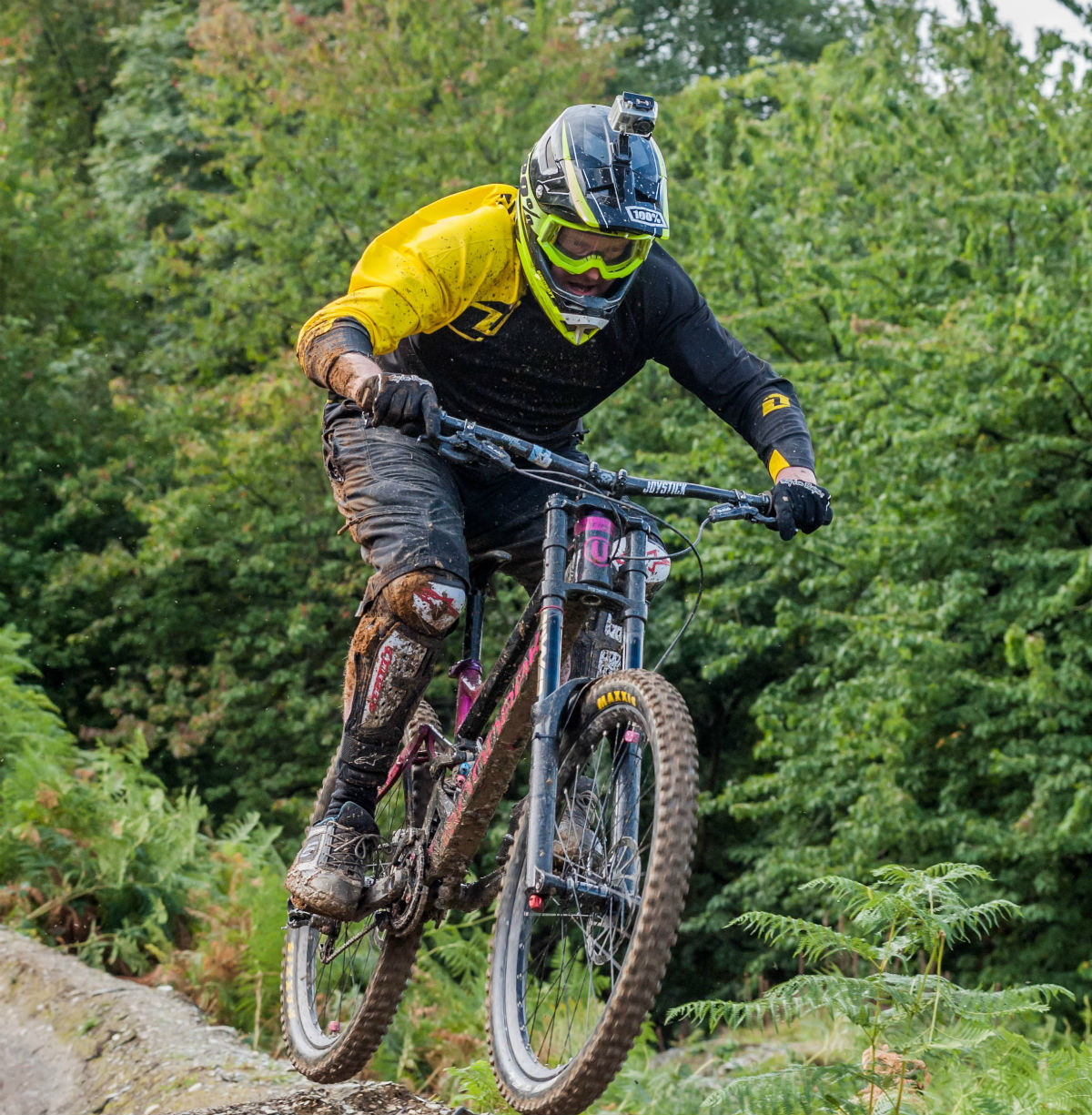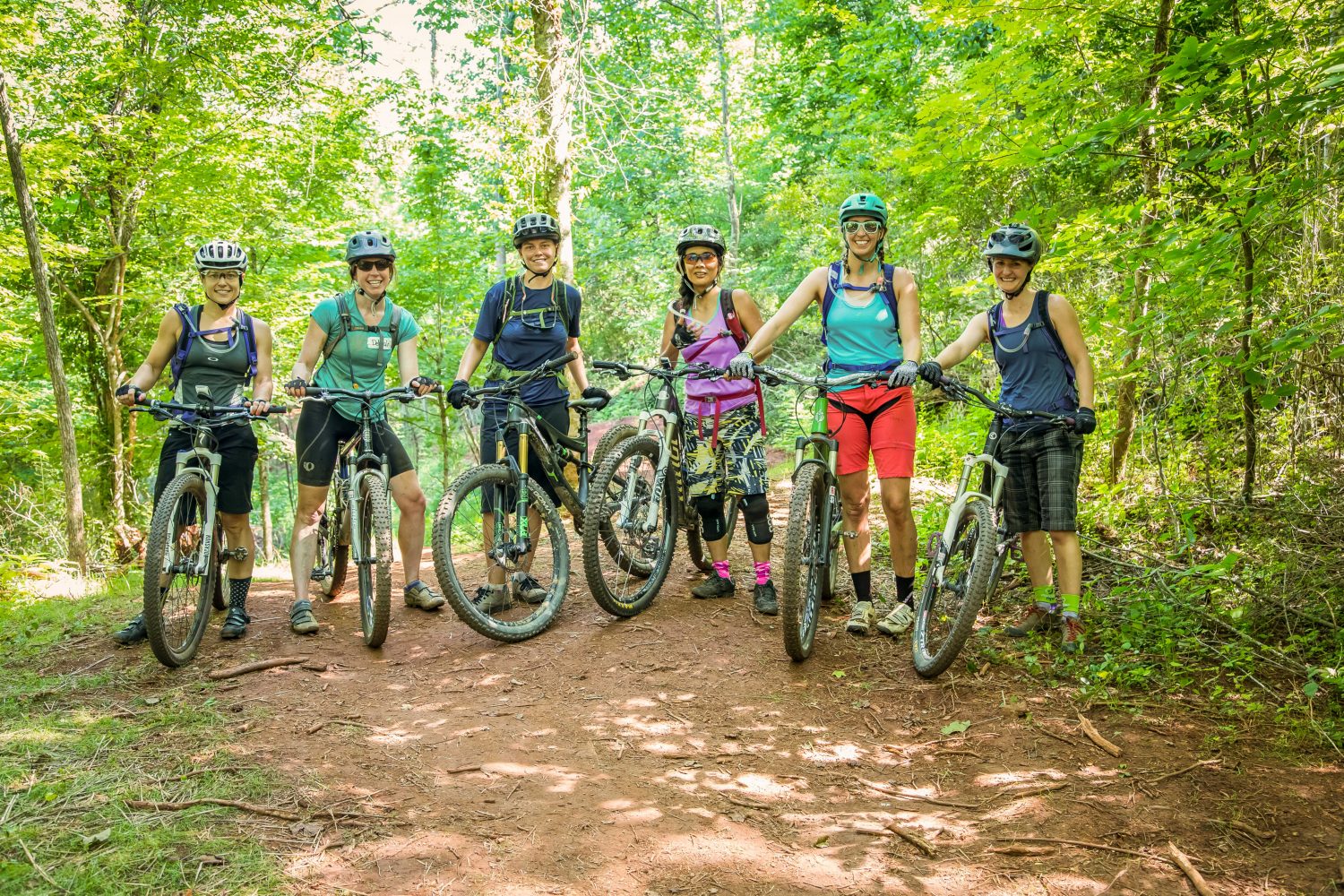What Makes a Bicycle Ideal for Trail Riding?
When searching for the best bicycle for trail riding, specific features significantly contribute to a smooth and enjoyable experience. Suspension systems, frame material, wheel size, and brakes are crucial elements to consider.
Suspension systems, often found on mountain bikes, absorb shocks and vibrations caused by uneven terrains. They come in two primary forms: hardtail and full-suspension. Hardtail bicycles have suspension only in the front fork, while full-suspension models offer both front and rear suspension. Full-suspension bicycles generally provide better traction, control, and comfort on technical trails but may weigh more and require more maintenance than hardtail models.
Frame material is another essential factor in selecting a trail riding bicycle. Common materials include aluminum, carbon fiber, and steel. Aluminum is lightweight, affordable, and durable, making it a popular choice for trail riders. Carbon fiber is lighter and stronger than aluminum but typically more expensive. Steel, while heavier and less common in modern mountain bikes, offers excellent durability and a comfortable ride.
Wheel size plays a significant role in maneuverability and stability. The most common wheel sizes for trail riding are 27.5″ and 29″. Smaller wheels, like 27.5″, provide better agility and acceleration, while larger wheels, such as 29″, offer superior rollover capabilities and stability on rough terrains.
Lastly, reliable brakes are vital for safe trail riding. Disc brakes, either mechanical or hydraulic, are the most common type found on mountain bikes. They offer consistent performance in various weather conditions and are more effective at stopping than rim brakes.
Navigating the Market: An Overview of Bicycle Categories for Trail Riding
When searching for the best bicycle for trail riding, understanding the different categories available is crucial. This section will discuss hardtail, full-suspension, and electric mountain bikes, highlighting their advantages and disadvantages to help you make an informed decision.
Hardtail bicycles, characterized by their front suspension fork, are a popular choice for trail riding due to their simplicity, affordability, and low maintenance. Hardtails are lighter than full-suspension bikes, making them easier to maneuver on smooth trails. However, they may not provide the same level of comfort and control on rough or technical terrains as full-suspension models.
Full-suspension bicycles, featuring both front and rear suspension systems, offer superior traction, control, and comfort on technical trails. These advanced suspension systems absorb shocks and vibrations, reducing rider fatigue and improving overall ride quality. However, full-suspension bikes tend to be heavier and more expensive than hardtails, requiring more maintenance and upkeep.
Electric mountain bikes, or e-MTBs, have gained popularity in recent years due to their innovative features and benefits. These bicycles incorporate a battery-powered motor that assists riders during climbs and long rides, extending their trail riding adventures. E-MTBs are available in both hardtail and full-suspension configurations, catering to various riding styles and preferences. However, they are typically more expensive and heavier than traditional mountain bikes, and their batteries may require regular charging and maintenance.
By understanding the primary categories of bicycles suitable for trail riding, you can narrow down your options and focus on models that best align with your riding style, experience level, and budget.
Top Hardtail Bicycles for Trail Riding Enthusiasts
Hardtail bicycles are an excellent choice for trail riding due to their simplicity, affordability, and low maintenance. Here are some of the best hardtail bicycles for trail riding, complete with key features and benefits:
1. Brand X F-Series Hardtail
The Brand X F-Series Hardtail boasts a lightweight aluminum frame, a reliable air suspension fork, and wide, grippy tires for superior traction on various terrains. Its versatile design makes it suitable for both beginner and experienced trail riders.
2. Company Y Z-Model Hardtail
The Company Y Z-Model Hardtail features a durable steel frame, hydraulic disc brakes, and a user-friendly 1x drivetrain. This model is perfect for riders who prioritize comfort and control on smooth to moderately technical trails.
3. Manufacturer M N-Type Hardtail
The Manufacturer M N-Type Hardtail is a high-performance hardtail with a carbon fiber frame, top-of-the-line suspension fork, and a dropper post for seamless saddle height adjustments during descents. This model caters to experienced trail riders seeking a fast, agile, and responsive ride.
When selecting the ideal hardtail bicycle for your trail riding adventures, consider factors such as riding style, experience level, budget, and personal preferences. By carefully evaluating these aspects, you can find the perfect hardtail bicycle to enhance your trail riding experience.
Full-Suspension Bicycles: The Ultimate Companions for Technical Trails
Full-suspension bicycles offer superior control, stability, and comfort on technical trails, making them an excellent choice for experienced trail riders. Here are some top-rated full-suspension bicycles designed for tackling challenging terrains:
1. Brand X D-Series Full-Suspension
The Brand X D-Series Full-Suspension features a high-quality aluminum frame, advanced air suspension systems, and a reliable 1x drivetrain. Its adjustable suspension settings cater to various riding styles and trail conditions, ensuring a smooth and enjoyable ride.
2. Company Y E-Model Full-Suspension
The Company Y E-Model Full-Suspension combines the benefits of full-suspension technology with an electric motor, providing riders with unparalleled assistance during climbs and long rides. Its robust frame, adjustable suspension, and powerful disc brakes make it an ideal choice for tackling technical trails.
3. Manufacturer M F-Type Full-Suspension
The Manufacturer M F-Type Full-Suspension boasts a carbon fiber frame, state-of-the-art suspension technology, and a dropper post for seamless saddle height adjustments during descents. This high-performance model caters to serious trail riders seeking a fast, agile, and responsive ride on challenging terrains.
When selecting the perfect full-suspension bicycle for your trail riding adventures, consider factors such as riding style, experience level, budget, and personal preferences. By carefully evaluating these aspects, you can find the ideal full-suspension bicycle to elevate your trail riding experience.
Electric Mountain Bikes: Revolutionizing Trail Riding for Enthusiasts
Electric mountain bikes, or e-MTBs, have transformed the trail riding landscape by offering riders innovative features and benefits that enhance their overall experience. These bicycles incorporate an electric motor that assists riders during climbs and long rides, extending their trail riding adventures. Here are some of the best electric mountain bikes for trail riding:
1. Brand X P-Series Electric Mountain Bike
The Brand X P-Series Electric Mountain Bike features a powerful electric motor, a high-capacity battery, and a durable aluminum frame. Its intuitive pedal-assist system allows riders to conquer steep inclines with ease, while its high-quality suspension fork ensures a smooth ride on various terrains.
2. Company Y Q-Model Electric Mountain Bike
The Company Y Q-Model Electric Mountain Bike combines style, performance, and cutting-edge technology in a single package. With a reliable electric motor, adjustable suspension settings, and hydraulic disc brakes, this e-MTB is perfect for riders who want to explore technical trails with confidence and ease.
3. Manufacturer M R-Type Electric Mountain Bike
The Manufacturer M R-Type Electric Mountain Bike boasts a carbon fiber frame, a state-of-the-art electric motor, and advanced suspension technology. This high-performance e-MTB caters to serious trail riders seeking a powerful, agile, and responsive ride on challenging terrains.
When selecting the ideal electric mountain bike for your trail riding adventures, consider factors such as riding style, experience level, budget, and personal preferences. By carefully evaluating these aspects, you can find the perfect e-MTB to elevate your trail riding experience.
How to Choose the Perfect Bicycle for Your Trail Riding Adventures
Selecting the ideal bicycle for trail riding involves careful consideration of various factors. By taking into account your riding style, experience level, budget, and personal preferences, you can make an informed decision and find the perfect bicycle for your trail riding adventures. Here are some valuable tips and insights to guide you in the process:
1. Identify Your Riding Style and Preferences
Determine whether you prefer cross-country, all-mountain, downhill, or enduro riding. Each style has specific requirements, and choosing a bicycle that aligns with your preferred riding style will enhance your overall trail riding experience.
2. Assess Your Experience Level
Consider your experience level when selecting a trail riding bicycle. For beginners, hardtail bicycles with basic suspension systems may be more suitable, while experienced riders might prefer full-suspension or electric mountain bikes for tackling technical trails and steep inclines.
3. Establish a Budget
Set a budget for your trail riding bicycle, keeping in mind that higher-priced models often offer advanced features and superior performance. However, there are also many affordable options that cater to various budgets and needs.
4. Research and Compare Models
Research and compare different models, taking into account factors such as frame material, wheel size, suspension type, and brakes. Consult expert reviews, ratings, and user feedback to narrow down your options and make an informed decision.
5. Test Ride Before Purchasing
Whenever possible, test ride the bicycle before purchasing. This will help you assess the bike’s fit, comfort, and performance, ensuring that it meets your expectations and requirements.
By following these tips and insights, you can choose the perfect bicycle for your trail riding adventures, ensuring a smooth, enjoyable, and memorable experience.
Maintaining Your Trail Riding Bicycle: Essential Care and Upkeep Tips
Proper maintenance and care are crucial for ensuring the longevity and optimal performance of your trail riding bicycle. By following these essential care and upkeep tips, you can keep your bike in top condition and enjoy smooth, safe, and enjoyable rides:
1. Regular Cleaning
Clean your bicycle after every ride, especially if you’ve been riding on muddy or dusty trails. Use a mild detergent, warm water, and a soft brush to remove dirt, debris, and grime from the frame, wheels, and components. Rinelyse thoroughly and dry with a clean towel to prevent rust and corrosion.
2. Lubrication
Regularly lubricate the chain, derailleur, and other moving parts to ensure smooth operation and prevent wear and tear. Use a high-quality bicycle lubricant and apply it sparingly to the chain while slowly pedaling the bike. Wipe off any excess lubricant to prevent attracting dirt and grime.
3. Tire Maintenance
Check tire pressure before every ride, and adjust it according to the manufacturer’s recommendations. Inspect the tires for cuts, punctures, or worn-down treads, and replace them if necessary. Regularly clean the tires and rims to remove dirt and debris, ensuring optimal traction and performance.
4. Brake Adjustment
Inspect the brakes regularly for wear and tear, and adjust them as needed to maintain proper stopping power. Ensure that the brake pads are aligned with the rim and that there is sufficient pad material remaining. Replace the pads if they are worn down or damaged.
5. Periodic Inspections
Conduct periodic inspections of your bicycle’s components, such as the bottom bracket, headset, and hubs, for signs of wear, looseness, or damage. Tighten or replace any components as necessary to maintain the bike’s structural integrity and performance.
By following these essential maintenance and care tips, you can keep your trail riding bicycle in top condition and ensure its longevity and optimal performance. Remember to consult your bicycle’s user manual for specific maintenance recommendations and guidelines.
Joining the Trail Riding Community: Finding Clubs, Events, and Resources
Connecting with other trail riding enthusiasts and participating in events can significantly enhance your trail riding experience. By engaging with the trail riding community, you can learn new skills, discover new trails, and build lasting relationships with like-minded individuals. Here are some clubs, events, and resources to help you get started:
1. Local Bicycle Clubs and Shops
Joining a local bicycle club or visiting a bicycle shop are excellent ways to meet other trail riding enthusiasts. These communities often host group rides, workshops, and social events, providing opportunities to learn, share experiences, and connect with fellow riders.
2. Online Forums and Social Media Groups
Online forums and social media groups dedicated to trail riding offer a wealth of information, resources, and connections. Participate in discussions, ask questions, and share your experiences with other members to expand your trail riding knowledge and network.
3. Bicycle Events and Races
Participating in bicycle events and races, such as trail riding marathons, endurance races, or skill competitions, can help you improve your skills, meet new people, and challenge yourself. Research upcoming events in your area and register to attend.
4. Trail Advocacy Groups
Get involved with trail advocacy groups that promote trail access, maintenance, and conservation. By supporting these organizations, you can help protect and preserve trails for future generations while connecting with other passionate trail riders.
5. Websites and Blogs
Explore websites and blogs dedicated to trail riding for valuable insights, tips, and resources. These platforms often feature articles, reviews, and guides on various aspects of trail riding, helping you stay informed and engaged with the community.
By tapping into the trail riding community, you can enrich your trail riding experiences, learn from others, and contribute to the growth and development of this exciting and rewarding pastime. Embrace the opportunity to connect with fellow trail riding enthusiasts and expand your horizons in the world of trail riding.







